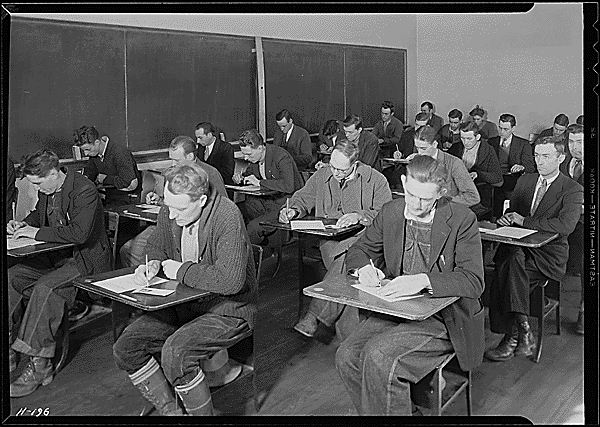Norris Dam:
To Build or Not to Build?
TVA History
Founded in the spring of 1933, the TVA was a new type of government corporation. It was charged to change the course of the Tennessee River and to improve the lives of those who lived within the river valley. Norris Dam became the first of numerous dams constructed in the Tennessee River Valley to help control floods, and improve agriculture and daily life. Life in the Tennessee River Valley was substantially altered by the TVA.
The Tennessee River Valley is a region that covers a large portion of Tennessee along the Tennessee River, as well as parts of northern Mississippi, Alabama, Georgia, and western North Carolina and Virginia. Norris Dam is located in Tennessee about 30 miles North of Knoxville. Times were especially tough in the Tennessee River Valley during the Great Depression, and the TVA helped solve many issues.

In order to fully understand the problems occurring in the Tennessee River Valley it is important to understand the national context. The 1930s were a rough time for most Americans. Jobs were few and far between and crops kept failing. Up until this time, farmers across the United States worked their land as hard as possible each season, because the largest crop resulted in the highest pay. This caused a depletion of nutrients within the soil which made it more difficult for future crops to grow. This was especially true of row crops, crops that grow in uniform rows leaving the majority of the topsoil uncovered. Topsoil contains the majority of the nutrients plants need to grow, and when it is left uncovered it can easily wash or blow away. Common row crops in the area included cotton, corn, and tobacco. These crops often left the fields bare during the winter months, which provided an opportunity for erosion. The degradation of soil resulted in years of terrible harvests leaving farming families with little to no money or food. When President Roosevelt took office in 1933, he had a plan to help the majority of the population. He employed the masses in a wide variety of positions. Roosevelt’s larger idea of creating government work programs was called the “New Deal,” and it created many different agencies, including the TVA.


There were two major reasons for the creation of the TVA: the first was the need to improve the agricultural lands within the Tennessee River Valley through flood control, and the second to create jobs as part of the New Deal. Nebraska Senator George Norris believed that if man could control the Tennessee River through the use of dams, he could control the flooding while creating dependable transportation and low-cost electricity. Through flood control much of the erosion could be prevented. In 1933, Senator Norris proposed a bill to the United States Senate which allowed for the creation of the TVA. President Roosevelt and his supporters saw this project as a way to create thousands of jobs in one of the sections of the country hit hardest by the Great Depression. President Roosevelt's support helped the bill to be signed into law on May 18, 1933. The planning process began immediately.
For the first time in the history of the United States, an entire river valley was taken into consideration as decisions were made about the use of land and resources. Previous projects often only looked at how a dam affected a specific part of a river, but the TVA looked at an area of 41,000 square miles along the Tennessee River. Not only were resources taken into consideration during the creation of the TVA, but so were the people of the area. According to one of the TVA’s studies, there were 2,300,000

million people living within this area in the 1930s, 51%, or approximately 1,200,000 million people, made up farming families, and an additional half a million people were rural non-farming families. Which meant that only 25% of the population lived in an urban environment. There were only two cities, Knoxville and Chattanooga, within the river basin that had a population of 100,000 or greater. The TVA wanted to improve the lives of those within the valley. In addition to jobs, electricity was soon available.

High unemployment rates meant hiring was a major project. The TVA divided the positions into two categories: professional and nonprofessional. Professional employees were allowed to apply no matter what their current residency was and were judged by their qualifications and references. When nonprofessional positions, mainly laborers, opened there were thousands of applicants, making it nearly impossible to evaluate all of them. The TVA decided to administer a series of examinations to judge potential workers. The test simply examined an individual’s
ability to follow oral and printed instructions, and included a short reading test and a mechanical aptitude test. There was also a non-written test which allowed those with little education a chance at a position. In order to prevent a major increase in unemployed workers coming to the Tennessee River Valley, workers had to be from the valley. This area included all of Tennessee and parts of Kentucky, Virginia, North Carolina, Georgia, Alabama, and Mississippi. Once hired, workers were paid based on a schedule set by an Executive order. Following this schedule helped to create consistency across all of the TVA projects.